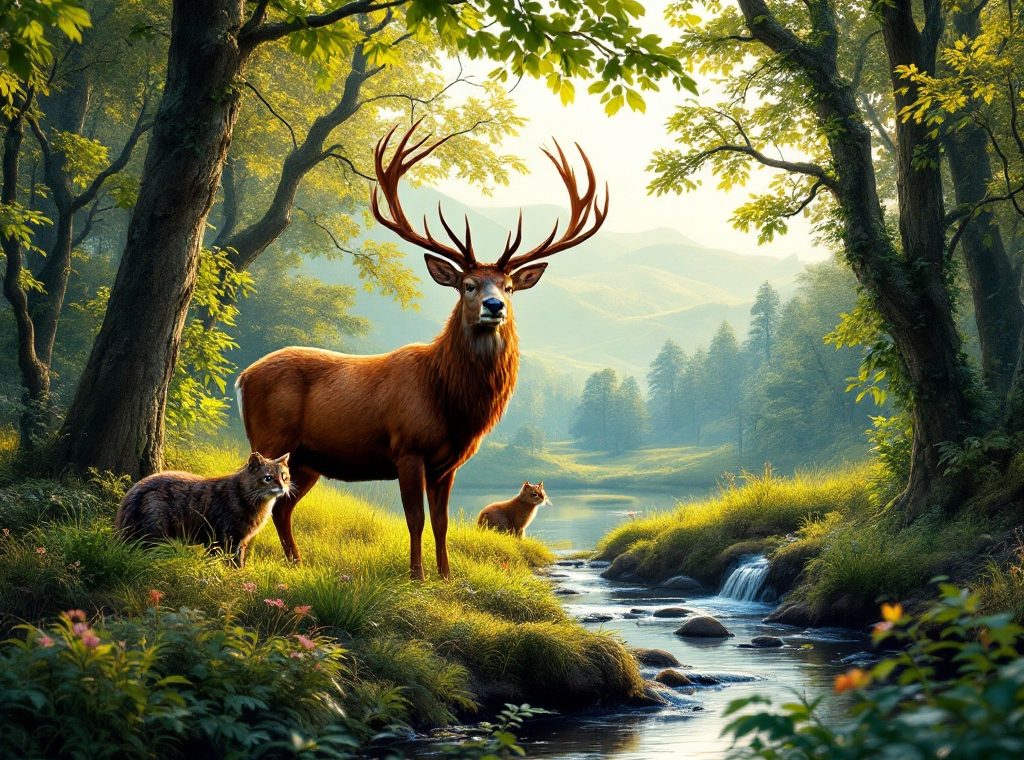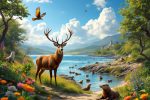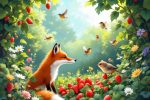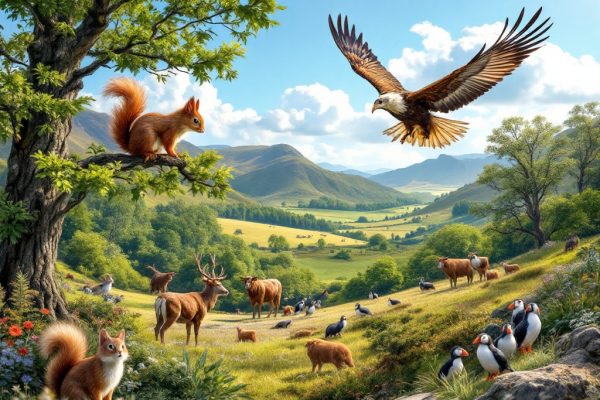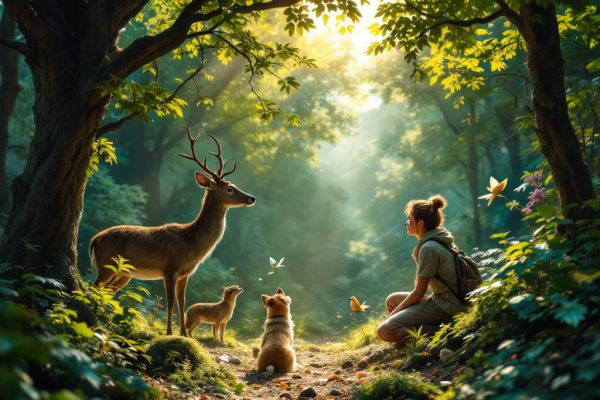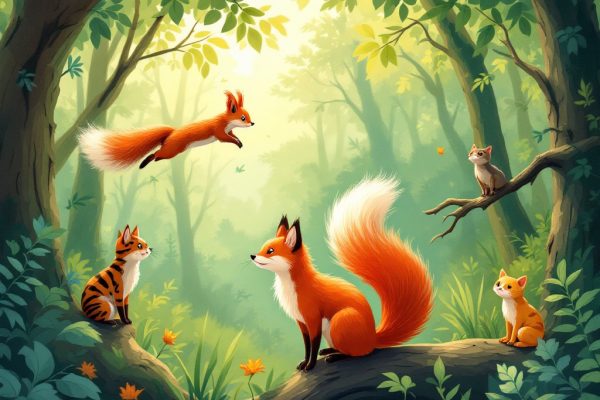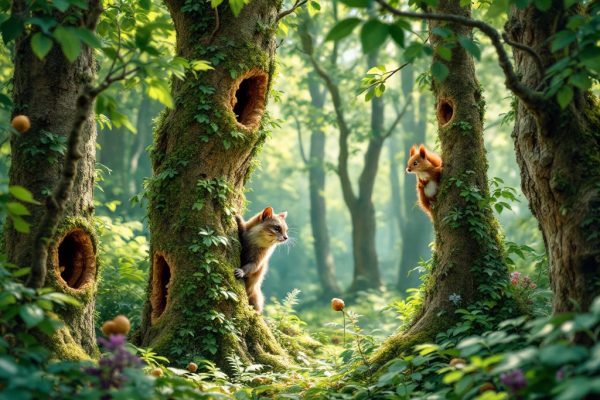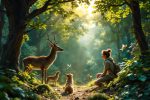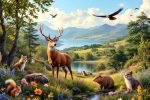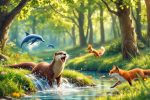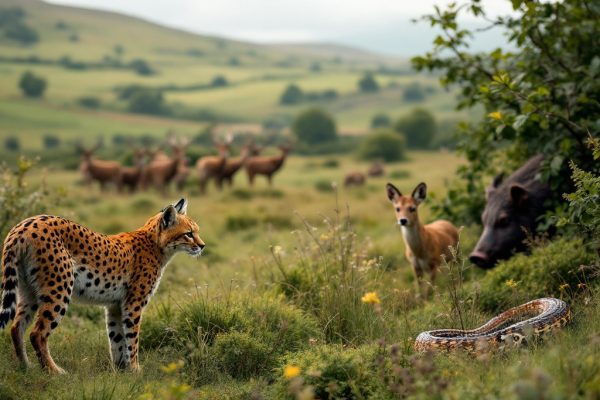Wild Forest Animals in Lothian You Should Know About
Discover the enchanting wildlife of Lothian’s forests! From majestic red deer stags with impressive antlers to elusive Scottish wildcats, Britain’s last native cat, a world of fascinating creatures awaits. Explore diverse habitats, from ancient woodlands to open moorlands, and witness the successful reintroduction of Eurasian beavers after a 400-year absence. Learn about ongoing conservation efforts and how you can contribute to protecting this rich biodiversity. Embark on a wildlife adventure in Lothian and experience the wonders of nature firsthand!
Important information
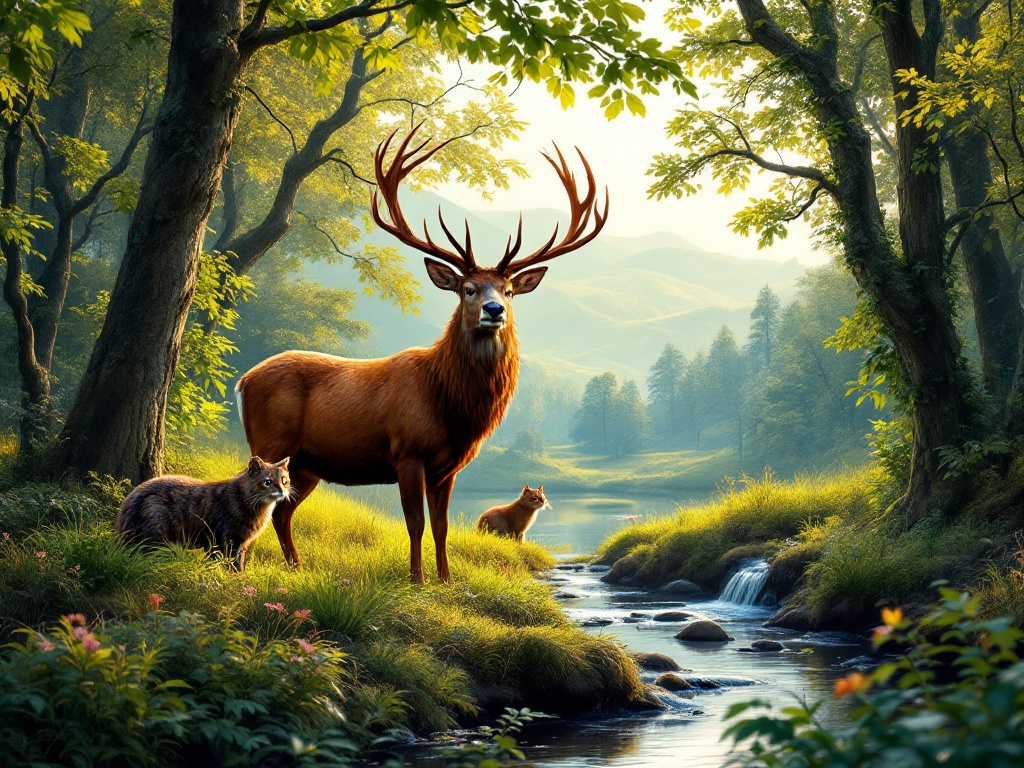
- Lothian’s forests support diverse wildlife, including red and roe deer, foxes, badgers, and various bird species.
- The Eurasian beaver, a keystone species, was successfully reintroduced in 2009, positively impacting the ecosystem.
- The Scottish wildcat, Britain’s only native cat, is critically endangered, primarily due to interbreeding with domestic cats.
- Red squirrels face a significant threat from the squirrelpox virus carried by invasive grey squirrels.
- Ongoing conservation efforts in Lothian focus on habitat preservation and species monitoring, including reforestation and creating wildlife corridors.
Discovering Wild Forest Animals in Lothian
Lothian’s forests are home to a variety of wildlife. Majestic red deer and nimble roe deer roam freely, while foxes and badgers are common sights. The calls of woodpeckers and owls fill the air, adding to the enchanting atmosphere. Smaller creatures like hedgehogs and rabbits, along with numerous insects and amphibians, contribute to the area’s rich biodiversity. For the best wildlife viewing opportunities, visit during dawn or dusk. Look for tracks, droppings, or nests, which are signs of animal activity. Binoculars and quiet observation will greatly improve your chances of spotting these often elusive creatures.
Top Wild Forest Animals to Encounter in Lothian
Lothian’s forests teem with a diverse range of wildlife. Red and roe deer roam freely, while brown and mountain hares bound through the undergrowth. Foxes and badgers find sanctuary within these woods. The forest air echoes with the drumming of woodpeckers, the hooting of owls, and the songs of numerous songbirds. Native red squirrels, though facing competition from invasive grey squirrels, still call these woods home. Further enriching this vibrant ecosystem, Eurasian beavers were successfully reintroduced in 2009. Soaring above, majestic ospreys and golden eagles patrol the skies. Lothian’s mixed woodlands, with their variety of trees, shrubs, and dense underbrush, create a rich tapestry of habitats, supporting a thriving and complex ecosystem.
Iconic Mammals of Lothian
Red Deer: Britain’s largest land mammal, the red deer stag boasts impressive antlers. These majestic creatures inhabit diverse terrains, from open moorlands to sheltered glens, grazing on grasses, heather, and even tree bark.
Roe Deer: Considerably smaller than the red deer, the roe deer favors woodlands, browsing on various plants. Its reddish-brown coat and white rump patch are distinctive, and the bucks grow small antlers, shedding them annually.
Brown Hare: With its long ears and powerful hind legs, the brown hare is built for speed, easily outrunning predators across open fields. Primarily nocturnal, its diet consists of grasses, herbs, and crops.
Mountain Hare: Adapting to upland Britain, the mountain hare’s coat changes with the seasons, providing white camouflage in snowy winters and transitioning to grayish-brown in summer. It feeds on grasses, heather, and twigs.
Scottish Wildcat: Critically endangered and significantly larger than a house cat, the Scottish wildcat sports a thick, ringed tail. Elusive and inhabiting remote areas of the Scottish Highlands, it preys on small mammals like rabbits and voles.
Pine Marten: A skilled climber thriving in woodlands, the agile pine marten belongs to the weasel family. Its rich brown fur contrasts with a creamy-yellow throat patch. This omnivore consumes a varied diet of small mammals, birds, insects, and berries.
Red Deer: Monarchs of the Glen
Red deer, the UK’s largest land mammal, are an iconic symbol of the Scottish Highlands. Majestic stags grow impressive antlers, which they shed and regrow each year. These magnificent creatures roam freely across the breathtaking landscape in large herds.
Roe Deer: Woodland Feeders
Roe deer play a vital role in Lothian’s woodlands, thriving amidst the trees. The forest offers them sustenance and protection. In return, these deer contribute to the woodland’s ecological equilibrium. Their varied diet, consisting of a wide array of plants, helps control vegetation growth and encourages biodiversity. A healthy forest is often marked by the presence of roe deer, signifying a balanced and flourishing ecosystem.
Brown Hares: Agile Sprinters Across Fields
Brown hares thrive in open fields, sustaining themselves on a herbivorous diet. These exceptional runners, with their long, powerful legs, can reach speeds of up to 45 mph. This remarkable speed enables rapid bursts and impressive jumps, essential for evading predators such as foxes and eagles. Their agility provides a significant advantage in their open habitat.
Mountain Hares: Upland Dwellers and Their Seasonal Visibility
Scottish mountain hares thrive in the upland areas of Scotland, notably the Pentland and Moorfoot Hills of Lothian. These herbivores primarily feed on grasses, heather, and sedges. While they are generally elusive creatures, the best time to observe them is during springtime when the snow melts and reveals their presence. Their coat offers remarkable camouflage, transitioning from a brown hue in summer to a pristine white in winter.
The Scottish Wildcat: Britain’s Last Native Cat
The Scottish wildcat, Britain’s only native cat, is critically endangered and faces extinction. The biggest threat to its survival is interbreeding with domestic cats.
Pine Martens: Woodland Residents
Agile pine martens, members of the weasel family, thrive in woodlands. These omnivorous creatures enjoy a diverse diet of small mammals, birds, insects, and fruits. As predators, they help control rodent populations and hunt other small animals. Their scavenging habits also contribute to forest health by recycling vital nutrients.
Unique and Endangered Species
Britain’s native red squirrels are facing a severe threat from the squirrelpox virus carried by invasive grey squirrels.
After a 400-year absence, Eurasian beavers have made a triumphant return to Britain, marking a positive turn for British wildlife.
Successfully reintroduced to Lothian in 2009, these beavers are playing a crucial role in restoring wetland ecosystems and boosting biodiversity. As a keystone species, their presence has a positive impact on the entire environment.
Red Squirrels: Challenges from Invasive Grey Squirrels
Grey squirrels carry the deadly squirrelpox virus, to which red squirrels have little immunity. As grey squirrel populations expand into red squirrel territories, this invasion further contributes to the decline of the red squirrel population.
Eurasian Beavers: Successful Reintroduction in 2009
Eurasian beavers, absent for four centuries, made a triumphant return to Scotland in 2009, marking a significant victory for conservation efforts.
Birds and Their Natural Habitats
Lothian offers a prime location for observing magnificent birds of prey, such as ospreys and golden eagles. Ospreys thrive near fish-rich waters, while golden eagles dominate the high cliffs and hunt across open moorland and mountainous terrain.
Birds of Prey: Ospreys and Golden Eagles
Ospreys are renowned for their dramatic dives to snatch fish from the water.
Golden eagles typically hunt rabbits and mountain hares.
Remarkably, both these powerful raptors inhabit Lothian.
Wildlife Watching and Nature Conservation in Lothian
Lothian offers incredible wildlife viewing opportunities and chances to participate in conservation efforts. Diverse habitats range from lush forests and protected reserves to the dramatic coastline. Venture into the forests to spot deer, badgers, foxes, and a variety of bird species thriving amidst rich flora and fauna. Look for elusive residents like red squirrels, beavers, ospreys, and golden eagles. Ongoing conservation work focuses on habitat preservation and species monitoring, including tree planting and the creation of wildlife corridors. Respectful observation is crucial: maintain a safe distance from animals, avoid disturbing them, and adhere to local guidelines. By enjoying nature responsibly, we can help ensure its continued vitality.
Best Spots for Wildlife Watching
Aberlady Bay, a Local Nature Reserve, attracts birdwatchers eager to glimpse its diverse avian population. The Pentland Hills Regional Park offers thrilling opportunities to spot mammals like red and roe deer. Dalkeith Country Park’s ancient woodland provides a beautiful and vital habitat for a variety of species.
Conservation Efforts and Challenges
Lothian’s conservation projects tackle habitat loss and invasive species through various initiatives, including reintroduction. The successful 2009 reintroduction of Eurasian beavers, for instance, has significantly boosted biodiversity. However, challenges remain. Human activities, along with climate change and road traffic, contribute to habitat loss and fragmentation, causing population decline. Therefore, ongoing conservation efforts are crucial for protecting Lothian’s diverse wildlife.
Key Threats to Lothian’s Wildlife
- habitat loss,
- invasive species,
- human activities,
- climate change,
- road traffic.
Conservation Efforts in Lothian
- reintroduction of native species (e.g., Eurasian beavers),
- ongoing conservation projects to protect diverse wildlife.
Conservation Projects and Reintroduction Initiatives
Lothian flourishes due to numerous conservation initiatives. These projects focus on protecting vital habitats and carefully monitoring diverse species, with strong community engagement. Reforestation projects are expanding woodland areas, and the development of wildlife corridors links isolated habitats, enabling species to prosper. Educational programs are also essential, increasing public understanding of biodiversity’s significance. A key success story is the 2009 reintroduction of the Eurasian beaver, which has benefited the local ecosystem.

